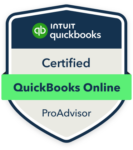Imagine finding your way around a city without a map—you won’t be able to. Thus, understanding financial statements is just as crucial for getting around business. Financial statements are the business trademarks that provide a proper snapshot of a company’s financial status. It is crucial to ensure proper business development in order to competently challenge competitors in the future.
According to recent studies, 82% of businesses fail due to poor cash flow management. This highlights the importance of understanding financial statements when making investment decisions. But who can manage all this? A person who understands all the basics & advancements of financial statements.
Through this blog, you’ll learn the essentials of financial statements, such as what they are, how they work, and why they matter. If you want to learn more about the balance sheet, income statement, & cash flow management, LUCI Financial Solutions is what you need. Whether you are a beginner or a thriving business, these financial statements can significantly assist you.
What are Financial Statements?
Financial statements are reports that show a company’s financial health.
Such statements organizes a business’s financial records so that employees or owners can understand it and ultimately make the right decisions. Professional financial managers and accountants are hired to manage and prepare these statements. They are then reviewed for accuracy and used for tax preparation, obtaining loan, or making investments.
Businesses that generate cash have financial records such as the balance sheet, income statements, cash flow statements, and equity statements. Nonprofit organizations use a similar set of financial statements that have some commonalities but also some differences.
Keep reading to learn more about the different types of financial statements & how to effectively manage them.
1. The Balance Sheet:
A balance sheet is a report that shows how well a business is doing at a specific point in time. It provides a snapshot of what the company owns, what it owes, and how much the owner has invested in the business. In simple terms, it shows the company’s “book value.” The balance sheet provides information about the company’s financial position and how its resources are financed.
Assets = Liabilities + Owners’ Equity.
Explanation of the Balance Sheet:
The balance sheet is divided into three parts: assets, liabilities, and equity. It provides a snapshot of the company’s financial position, showing how much it owns and owes. This information is crucial for investors, lenders, and management to make informed decisions.
Furthermore, the balance sheet represents the total of a company’s cash, property, liabilities, and owner’s equity. This overall picture helps stakeholders assess the company’s stability, liquidity, and efficiency. It also aids in future planning and investment decision-making.
Key Components:
1. Asset:
Something of value that is owned or controlled by a business.
- Current Assets: These are assets that can be converted into cash within one year, including cash, inventory, and accounts receivable.
- Fixed Assets: These assets are items a business uses for an extended period to conduct its operations, such as buildings, machinery, and equipment. For example, Apple includes its main office and equipment for making products as fixed assets.
2. Liabilities:
Liabilities represent a company’s obligations to other people or businesses. Depending on the business, they are typically divided into two main sections on the financial statements.
- Short-term debts: The company must make payments within the next year, such as money owed to suppliers and loans due soon. For instance, a store might owe money to its suppliers for the things it bought.
- Long-term Liabilities: Refer to debts that must be repaid over a period longer than one year, such as mortgages and bonds. For instance, a real estate company may include its long-term mortgages in the list of its long-term obligations.
3. Equity:
Equity is the remaining value after all debts have been settled, similar to a profit from paying off debt over time. There are two main types of equity.
- Retained Earnings: This is the money the company has made and saved over the years and used to grow the business. For instance, the money Microsoft has kept from its profits shows how much it has reinvested over time.
- Common Stock: It represents the ownership stake in a company that people acquire by investing money. For instance, the funds received from the sale of Tesla’s shares contribute to its overall equity.
Reading / Calculating the Balance Sheet:
- Understand the Components: Learn about what you own, what you owe, and how much your investments are worth.
- Review the organization: Consider the company’s short-term financial obligations, including debts and immediate expenses.
- Assess your finances: Examine your available funds to ensure you can cover your bills, debts, and other expenses. Verify that your financial resources are sufficient by reviewing all aspects of your finances.
For Instance, In 2021, Apple Inc. made a lot of money. They had $351 billion worth of assets they could sell quickly and $287 billion in bills they had to pay soon, which means they had a lot of money available.
2. The Income Statement:
The income statement displays the amount of money a company makes and spends during a specific period. It explains how a company’s money turns into profit, and shows its performance.
On the one hand, the balance sheet provides a snapshot of the company’s financial position at a specific point in time, whereas the income statement illustrates the company’s financial performance over a period, such as a few months or a year.
Key Components:
1. Revenue:
Revenue refers to the income generated by a company through its business activities. This term is commonly categorized into two main types.
- Operating Revenue: A company generates revenue by selling its primary products or services. For example, Apple generates revenue from iPhone sales.
- Non-Operating Revenue: Refers to money earned from sources such as interest, rent, or profits from investments. For example, a retail company generates revenue by investing its surplus funds in the bank.
2. Expenses:
Expenses refer to the funds utilized in the process of generating revenue for a company. This breakdown is provided for your convenience.
- Cost of Goods Sold: COGS is the direct cost of producing a company’s products, including the money spent on materials and labor.
- Operating Expenses: These are the day-to-day costs of running a business, such as rent, electricity, employee wages, and marketing. They also cover salaries for office workers and the expenses of office supplies.
3. Net Income:
Calculation: Net Income = Revenue – Expenses
Net income, or the bottom line, shows how much money the company makes after subtracting all expenses from its total revenue. It’s a meaningful way to see how well a company is doing financially and how healthy it is overall.
Reading / Calculating the Income Statement:
- Focus on Revenue & Expenses: Identify primary sources of income and significant expenses.
- Trend Analysis: Compare income statements over multiple periods to identify trends in revenue growth and expense management.
- Profitability: Assess how efficiently the company is generating profit from its revenues.
Example: Amazon’s 2021 income statement revealed $469 billion in revenue with a net income of $33 billion, reflecting robust profitability despite high operational costs.
Differences Between the Balance Sheet & Income Statement:
| Aspect | Balance Sheet | Income Statement |
| Time Frame | Provides a snapshot of the company’s financial position at a specific point in time | Covers a period, showing the company’s performance over that duration |
| Content | Lists assets, liabilities, and equity, highlighting what the company owns and owes | Focuses on revenues and expenses, detailing how income is generated and what costs are incurred |
| Purpose | It helps assess the company’s stability and liquidity | Evaluates profitability and operational efficiency over a specific period |
The Cash Flow Statement:
“The cash flow statement illustrates the amount of money that enters and exits a company during a specific period. Understanding how a company earns and spends money, as well as its cash position, is crucial for maintaining financial well-being. It aids in monitoring the company’s financial health and keeping a record of all payments through professional invoices.”
The income statement provides information about the company’s earnings, while the cash flow statement reveals the actual cash available to the company for its operations and expenditures. Creating an accurate cash flow statement involves several important considerations.
How to Create & Read a Cash Flow Statement?
- Collect Data: Gather financial data from transactions.
- Categorize: Separate into operating, investing, and financing activities.
- Summarize: Calculate net cash flows for each category.
- Compile: Combine into a single statement showing cash inflows and outflows.
Key Components:
1. Operating Activities:
Operating activities are the primary way a company makes money, including all the transactions impacting its earnings.
- Cash Receipts from Sales: Revenue is the money received from customers for goods or services purchased.
- Cash Payments to Suppliers & Employees: These payments are funds used to purchase inventory and compensate employees.
- Interest & Taxes Paid: Money paid for borrowing money and taxes on income.
2. Investing Activities:
Investing activities involve the buying and selling of assets such as land, buildings, or stocks for long-term financial gain, ensuring stability in a specific business.
- Purchase of PPE: “When you buy property, plant, and equipment, you are using cash to purchase buildings and machinery.”
- Selling Investments: Generating income by selling stocks, bonds, or other investments.
- Buying Other Businesses: Acquiring another company or its assets by spending money.
3. Financing Activities:
Financing activities involve a company’s acquisition and disposition of shares or loans, which can alter the company’s funding structure.
- Selling Stock: Generating funds by selling shares to investors.
- Debts & Repayments: Taking out and repaying loans within a set timeframe.
- Dividends Paid: Money distributed to shareholders as dividends.
Importance of the Cash Flow Statement for Understanding Cash Flow:
The cash flow statement plays a crucial role in managing and maintaining a proper network of financial statements. Here, let’s see how it works:
- Liquidity Assessment: It helps determine if the company has enough cash to pay its bills promptly.
- Operational Order: Evaluating the company’s core activities helps to gauge its effectiveness.
- Investment Choices: The section on investment details the company’s decision-making process for investments and its strategies for growth.
- Financial Health: It demonstrates how a company utilizes borrowed funds compared to its own capital to support its operations.
How to Read a Cash Flow Statement?
- Analyzing Operating Cash Flow: Review the funds generated from primary business operations.
- Noticing Investing Cash Flow: Keep track of cash flow by monitoring spending on asset acquisition and investments.
- Checking Financing Cash Flow: Analyze the movement of money in and out of the business through loans and investments.
- Reviewing Cash Position: Evaluate the company’s cash holdings and its management.
Common Mistakes & Misinterpretations:
When analyzing financial statements, it’s important to avoid making mistakes and misinterpreting information, as this can lead to inaccurate conclusions. One common mistake is failing to review a company’s financial statements across different time periods, which can make it difficult to identify trends and gauge the company’s performance accurately, hindering the ability to adapt to industry changes.
Additionally, it’s crucial to pay attention to footnotes and disclosures, as these sections often contain vital information about the company’s accounting practices, potential debts, and other important details that can impact its financial health.
Lastly, it’s common for people to compare ratios to industry averages, which can result in misguided assessments of a company’s financial standing.
Ensuring Accuracy & Completeness:
- Review each component of financial statements carefully.
- Pay attention to notes and disclosures for context.
- Compare financial ratios to industry standards.
- Cross-reference statements with previous periods for trends.
- Seek professional advice for interpreting complex data.
Practical Applications for Small Business Owners:
Financial statements offer crucial information about a company’s financial health. Small business owners can utilize these statements to make informed decisions regarding their budgets, spending, and investments.
For example, examining the income statement can help identify areas to reduce spending, allowing the business to increase its profits.
Financial Planning & Forecasting:
Accurate and reliable financial documents are essential for creating well-informed financial plans and forecasts. These documents assist business owners in projecting their future earnings, expenditures, and cash flow, enabling them to develop practical financial strategies.
For example, analyzing previous cash flow statements can help us forecast future cash needs and ensure adequate savings.
Securing Loans & Attracting Investors:
Accurate financial statements are crucial when seeking loans or investments for your business. Lenders and investors require detailed information about a company’s financial health to assess potential risks and returns.
Presenting accurate financial documents such as balance sheets, income statements, and cash flow statements can enhance a company’s credibility and increase its likelihood of securing necessary funds.
Conclusion:
Understanding financial statements is essential to making intelligent business choices and keeping your financial management systems healthy. These statements give information about a company’s income, ability to pay its bills, and financial security. Remember, it’s about making your businesses solid and effective for the future.
For small business owners, seeking professional help can ensure accuracy and practical analysis. Contact LUCI Financial Solutions for expert assistance with financial management and to help navigate your business’s financial landscape successfully.
Leave us a message, and let us take care of your finances to ensure the success of your business.










